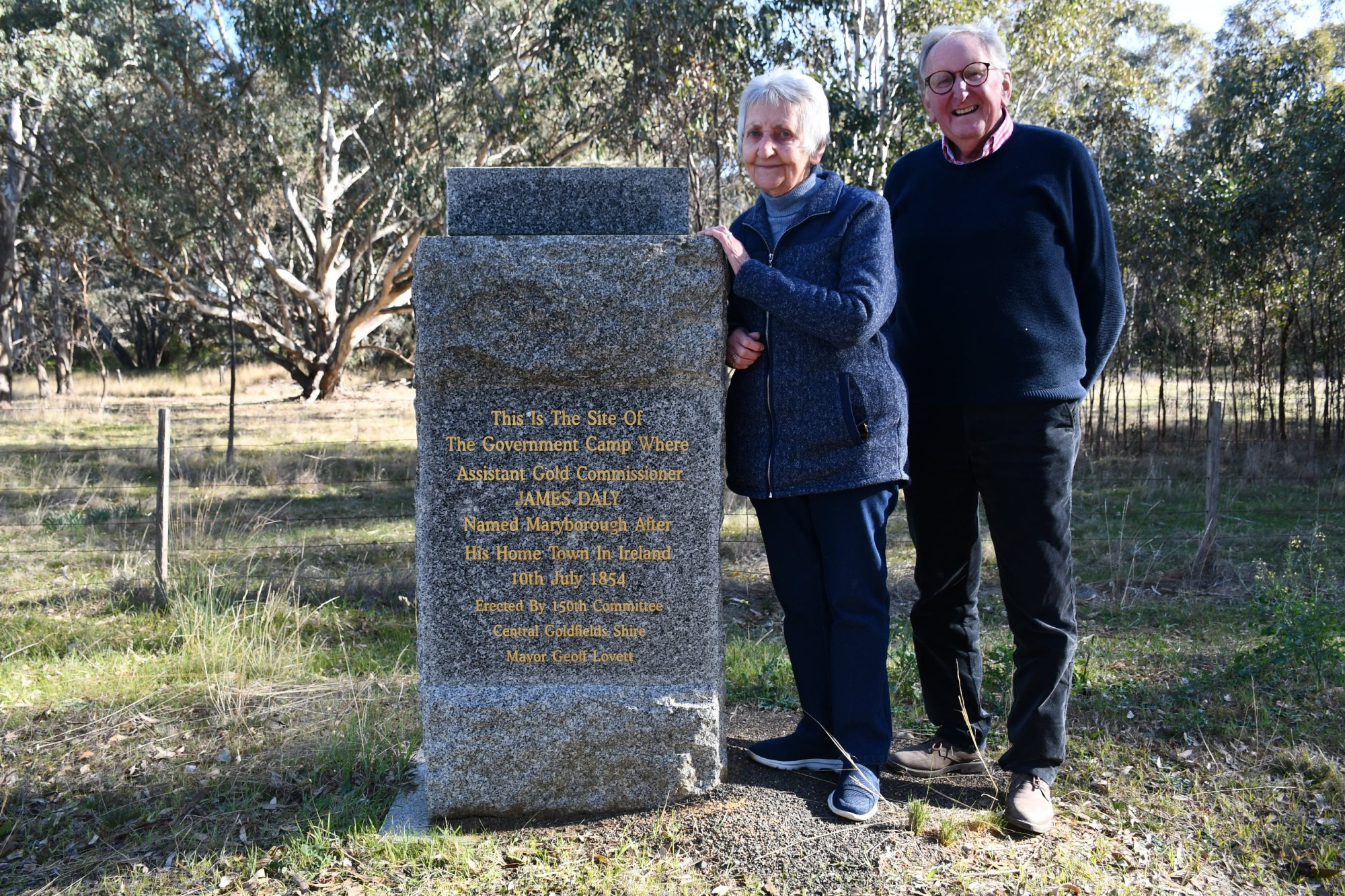General News
8 July, 2024
Maryborough turns 170 this week, with the town’s history being remembered by locals
Just days after the 150th anniversary of rail services arriving in town, Maryborough is in for another significant milestone — with tomorrow marking the 170th anniversary of the town’s naming. On July 10, 1854, Assistant Commissioner James Daly...

Just days after the 150th anniversary of rail services arriving in town, Maryborough is in for another significant milestone — with tomorrow marking the 170th anniversary of the town’s naming.
On July 10, 1854, Assistant Commissioner James Daly wrote an historically significant letter to a friend in Melbourne:
“I have been a sort of Itinerant Commissioner for the past few months, knocking about from stations on the Goldfields. I am just after forming a new camp of my own to which I have given the name of
Maryborough and expect to be fixed here for some time,” the letter, now in the care of the Maryborough Midlands Historical Society, reads.
It is the first written record of Maryborough’s name and is a rare example of a town being able to trace its name right back to its own genesis.
But why was it named Maryborough?
In the 170 years since Daly’s letter was written, it’s been claimed and published in a number of books and websites, that Maryborough was named after Daly’s birthplace of Maryborough/Portlaoise in County Laoise, central Ireland.
However, some Daly family descendants and researchers, who spoke with Maryborough historian Betty Osborn, have cast doubt on the popular legend — suggesting instead that the name more likely refers to a smaller townland in County Cork, where Daly was baptised, and his parents married.
Interestingly, the name Maryborough doesn’t appear on modern day maps of Ireland.
In 1557 there was a town named Maryborough founded (and named in Queen Mary’s honour) in central Ireland, but following ‘The Troubles’, was renamed to its Gaelic name, Portlaoise.
The origins behind Maryborough, Victoria’s naming may remain a mystery but what is well known is the transition of Maryborough from a significant area of the goldfields to a burgeoning hub of industry.
At the time of Maryborough’s naming, the area’s population is estimated at being as much as five times higher than the current 8160 residents, as per the Australian Bureau of Statistics 2021 Census.
Local councillor and member of the Maryborough Midlands Historical Society, Geoff Lovett, recalls that while conditions were harsh, the dream of striking it rich on the local goldfields was well and truly alive.
“The feeling was that gold was found around about the April of 1854, but certainly by June there were up to 50,000 people at what is now Maryborough, but at the time was referred to as Simson’s Ranges,” he said.
“A vast majority of these people were men and the conditions were horrific, there was very little running water, but of course people were seeking their fortune.”
Early records from the Maryborough diggings show some did find their fortune, with the Mount Alexander Mail reporting in August 1854 that gold “of a very large description” was being found throughout the Maryborough diggings.
While the goldfields at Maryborough were proving to be profitable, the fledgling town wasn’t without its challenges, namely in terms of water supply.
Water was not in abundance in Maryborough, and according to the Geelong Advertiser and Intelligencer in late-August of 1854, was being carted from three to four miles away and sold on the diggings for a shilling a bucket.
“Maryborough, realistically, was never meant to be because we didn’t have a reliable source of water — it was always assumed Carisbrook would become what Maryborough now is, as Carisbrook also predates Maryborough,” Cr Lovett said.
“The main drain running through town is actually Four Mile Creek which was Maryborough’s only real source of water.
“It was considered Maryborough would probably die a natural death because the creek was just a boggy trickle of stinking water however, the people of the time made it work.”
Cr Lovett said it’s an early example of a narrative that would continue throughout Maryborough’s now 170-year history — a story of survival against the odds.
“Maryborough’s history shows a series of peaks and troughs, when alluvial gold ran out, deep lead mining started and then began to dwindle in the early 1900s,” he said.
“Like a lot of old gold mining towns, houses were starting to be moved out of town to higher growth areas.
“In 1917 the Maryborough Progress Association started up and the first company they attracted here was the Maryborough Knitting Mill and then Patience & Nicholson. Those two companies alone for the next 50 years were Maryborough’s largest employers.
“The Maryborough Progress Association was not only responsible for bringing those industries here, but for saving Maryborough — it’s a narrative seen all through our history.”
Located at the Maryborough Golf Club and in Dooleys Road at Simson are two cairns that commemorate Daly’s role in naming Maryborough, and while small, the history they underscore is significant.